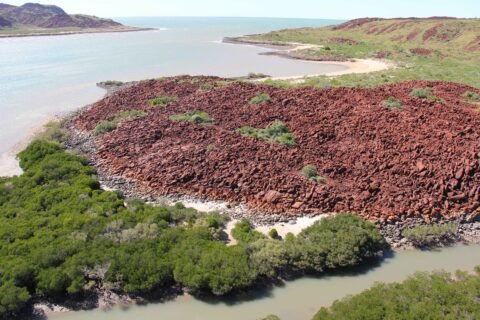(Bloomberg) — The United Nations has granted World Heritage status to an ancient Aboriginal rock art site in Australia that’s close to an industrial gas hub, a development that will require the government to protect the cultural area.
The Murujuga site, located on the Burrup Peninsula in northwest Australia, contains the largest collection of rock art in the world. Covering around 100,000 hectares, it has more than 1 million engravings known as petroglyphs with depictions of animals, plants — and perhaps the oldest depiction of a human face.
The site is of “immense cultural and spiritual significance” to Aboriginal Australians and was designated a Cultural World Heritage Site at the 47th session of the UN World Heritage Committee in Paris on Friday, Australian Environment Minister Murray Watt said in a statement.
“For more than 50,000 years, the Ngarda-Ngarli people have protected and managed this significant land and seascape,” Watt said, adding it will now receive another level of protection.
The site, however, is near a multibillion dollar liquefied natural gas export hub operated by Woodside Energy Group Ltd. Opponents to fossil fuels as well as aboriginal and environmental activists have waged campaigns against the gas giant, and warned of damage to the site caused by emissions from Woodside’s facility.
Activists have also launched legal proceedings against a planned expansion of the LNG plant. Woodside’s North West Shelf plant is currently permitted to operate until the end of this decade, but the company has received preliminary approval from the Australian government to extend its life to 2070.
“This is well-deserved global recognition of the petroglyphs and the unique living cultural values of Murujuga, to Australia and the world,” a Woodside spokesperson said in an emailed response to questions, adding the company will keep working with related parties “on the continued protection and management of this globally significant area.”
A recent study into emissions at the site indicated some increased porosity in rocks due to industrial emissions, but the data did not support theories that acid rain could affect the artwork.
LNG from the North West Shelf is exported to companies in Japan, South Korea and China. The facility is also a major contributor to domestic gas supply in Western Australia.
More stories like this are available on bloomberg.com




